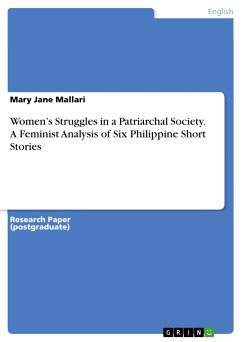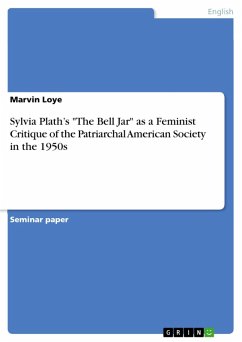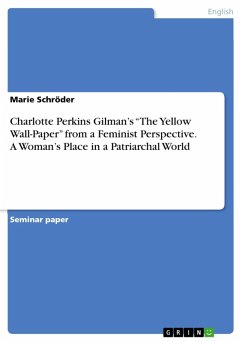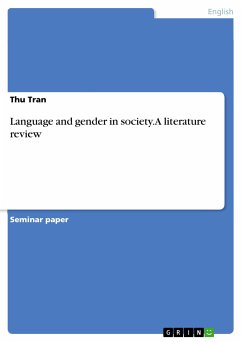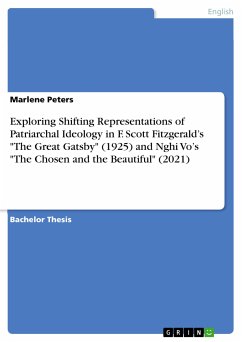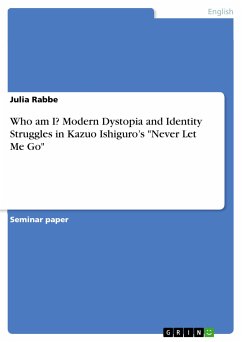Research Paper (postgraduate) from the year 2016 in the subject English Language and Literature Studies - Comparative Literature, grade: 1.25, , course: Graduate Program in Master of Arts in English Language Teaching, language: English, abstract: This paper attempted to analyze in the six Philippine short stories written by Filipino women the struggles that continue to plague women as they continue to improve their plight in a patriarchal society. "Desire" by Paz Latorena (1937); "The Corals" by Edith Tiempo (1948); "The Virgin" by Kerima Polotan-Tuvera (1952); "Love in the Corn Husk" by Aida Rivera-Ford (1957); "Magnificence" by Estrella Alfon (1960); and "The Visitation of the Gods" by Gilda Cordero-Fernando (1962). Specifically this study aimed to answer these following questions: What elements of feminism are present in the six short stories? What struggles are experienced by these women characters in terms of: economic inequality; social discrimination; political power; and psychological oppression? What are the causes of their struggles? What courses of action do the women take to triumph over their struggles? How can this study contribute to the in promoting gender equality and women empowerment in the local setting as well as in the international stage? For the research methodology, the study made use of the descriptive method. The researcher found it was appropriate because it makes use of the processes of gathering, analyzing and classifying data about prevailing conditions, practices, beliefs, processes, trends, and cause and effect relationships. The principal anchor of this method was the description of the nature of a situation as it exists during the time of the study and to explore the causes of a particular phenomenon.
Dieser Download kann aus rechtlichen Gründen nur mit Rechnungsadresse in A, B, BG, CY, CZ, D, DK, EW, E, FIN, F, GR, HR, H, IRL, I, LT, L, LR, M, NL, PL, P, R, S, SLO, SK ausgeliefert werden.

